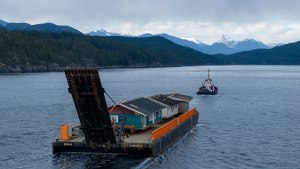Amaranth Soil Management Facility Inc., based near Orangeville, Ontario, aims to convert a former landfill site to a soil treatment and disposal facility. The Ontario government has passed legislation that gives municipalities tools to help stimulate and encourage brownfield redevelopment.
ORANGEVILLE, Ont.
Provincial land-use restrictions have left many developers feeling angry and constricted, but others have found opportunity in adversity.
Entrepreneurs, such as Amaranth Soil Management Facility Inc., see a chance to turn a dollar by storing and rehabilitating contaminated soil from brownfield sites slated for development.
Located in the Township of Amaranth, adjacent to Orangeville, Ont. the company aims to convert that municipality’s former landfill site to a soil treatment and disposal facility capable of accommodating up 5 million cubic metres of non-hazardous waste.
Scheduled to be in full operation by 2013, the facility will handle waste that includes soil and soil mixtures, construction and demolition waste, as well as land-clearing debris.
Brownfields, sites of former industrial and commercial facilities, contain real or perceived environmental soil contamination.
Despite the complexity of developing these properties, they are often in desirable and strategic locations; including downtown areas and alongside scenic waterfronts.
Since their election in 2003, the Liberals — through the Green Belt and Places to Grow acts — have pursued an agenda of preventing urban sprawl while preserving farmlands and environmentally sensitive areas.
This inevitably calls for population intensification in urban regions and the government has passed legislation, (notably the Planning and Conservation Land Statute Law Amendment Act in 2006), that gives municipalities additional tools to help stimulate and encourage brownfield redevelopment.
Wilf Goldlust, CEO of Amaranth Soil Management Facility, says this new business niche also comes from stiffer regulations on construction sites put forward by the provincial Ministry of the Environment.
“The ministry is bringing in more stringent regulations to have development sites cleaned up to a higher standard,” says Goldlust. “Thus, the greater need for landfill space.”
The proposed new facility is advantageous to the Township of Amaranth, besides being a new business that will add tax revenue to the municipal coffers.
The 34-year-old landfill is slated to be closed, as part of a County of Dufferin initiative to assume responsibility for waste collection across the county and ship it to a planned gasification plant.
The township would have been responsible for the waste that is currently in the landfill, however, and costs estimates for the removal were in the million-dollar range, a hefty sum for a municipality with a population of just under 3,500.
As well, the landfill was built to 1970s standards. If it was to remain in operation, it would have to undergo costly upgrades to meet current regulations.
“We’ve eliminated a significant liability we had in this township,” sums up Amaranth Mayor Don MacIver.
Besides clearing approximately 50,000 cubic metres of waste from the 29-hectare landfill at its own expense, Amaranth Soil Facility Inc. has displayed site plans that include an “interceptor” system that consists of trenches and pipes to keep water out and liners that will keep any leachates from escaping.
The technology is simple. Waste soil will be set out in wind row fashion and turned every two to three days, subjecting the contaminants to passive aeration and biodegradation until the soil is sufficiently cleaned to standard.
While fully expecting a return on the company’s investment, Goldlust admits the soil treatment business will “have its limitations.
“It will grow, as long as those (brownfields) are being cleared and developed. The industry will be a growing one for the next two to four years before taking a pause. In all, it will grow for 10 to 12 years and then it will level off.”










Recent Comments
comments for this post are closed